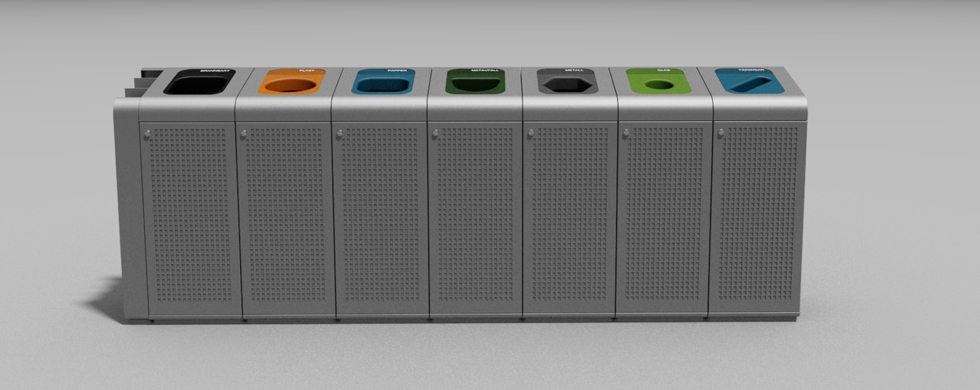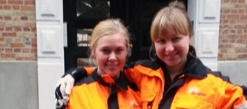Recycling Station
Sorting out waste , The development of a recycling station for public indoor environments in Gothenburg
Summary
This Master Thesis was executed at the department of Product and Production Development at Chalmers University of Technology by Anna Johansson and Agnes Lindahl. The project was conducted at the request of the municipality of Gothenburg and the organization for collaboration “Trygg, vacker stad” (“Safe, beautiful city”).
There is at present a political wish to increase the sorting of waste in the public areas of Gothenburg, and this project is part of achieving that goal. The aim of this project is to develop a recycling station for public indoor environments, such as stadiums, theaters, museums, public baths, schools, exhibitions halls, libraries, etc. The recycling station should be inviting and should simplify and encourage the sorting of waste. It should also be sufficiently large, visible, and easy to use, and the design should impede vandalism. The recycling station should be designed to meet the ergonomic needs of different types of users, for example people throwing waste, emptying, installing, repairing or cleaning the station.
The final result is a modular and flexible recycling station called IDA (Identify, Detect, Assort). The design strikes a balance between discretion and attention-seeking. It blends into most public indoor environments but is sufficiently noticeable when needed. The dimensions of the recycling station are adapted to fit the user group, which includes children above the age of seven and adult citizens of Gothenburg, as well as people with different types of physical or cognitive needs.
The modular system allows for a high level of adaptation. The lids that distinguish the waste fractions are exchangeable, which also prolongs the lifespan of the recycling station. Other important features are the separate collection of deposit cans, the detachable inner floor (which allows for easy cleaning), and the tactile letters (which make the recycling station accessible to users with visual impairment). The inner container is designed so as to make the emptying process ergonomically advantageous. It also has a built in floor to support the bag and prevent leakage. The inner container is detachable in its entirety. This is to simplify cleaning and allow for easy access.
An initial theoretical study was carried out so as to provide guidelines and information regarding physical ergonomics, anthropometry, and cognition. A description of the waste management system in Gothenburg in relation to public indoor environments was developed, and a benchmarking study was carried out, which provided a picture of what the system looks like and what solutions exist today. The public indoor environments were divided into four different categories depending on their characteristics: sport facilities, cultural facilities, event facilities, and schools.
An extensive user study was performed which included both sorters and collectors. The study was conducted by the means of interviews, observations, and surveys. The different types of public indoor environments were visited and four concepts were developed on the basis of the findings. The concepts were presented and discussed with various interested parties and facility managers at the municipality. As a result the functionality and main features of the final concept could be ascertained.
The development of the final concept was an iterative process, which was carried out through further studies and consultations with experts in various fields such as materials, colours, manufacturing, accessibility, and expression. The validation confirmed that the recycling station fulfilled the demands. To further evaluate the product it is appropriate to make a prototype that could be tested in a public indoor environment
Skriv ut ![]()


